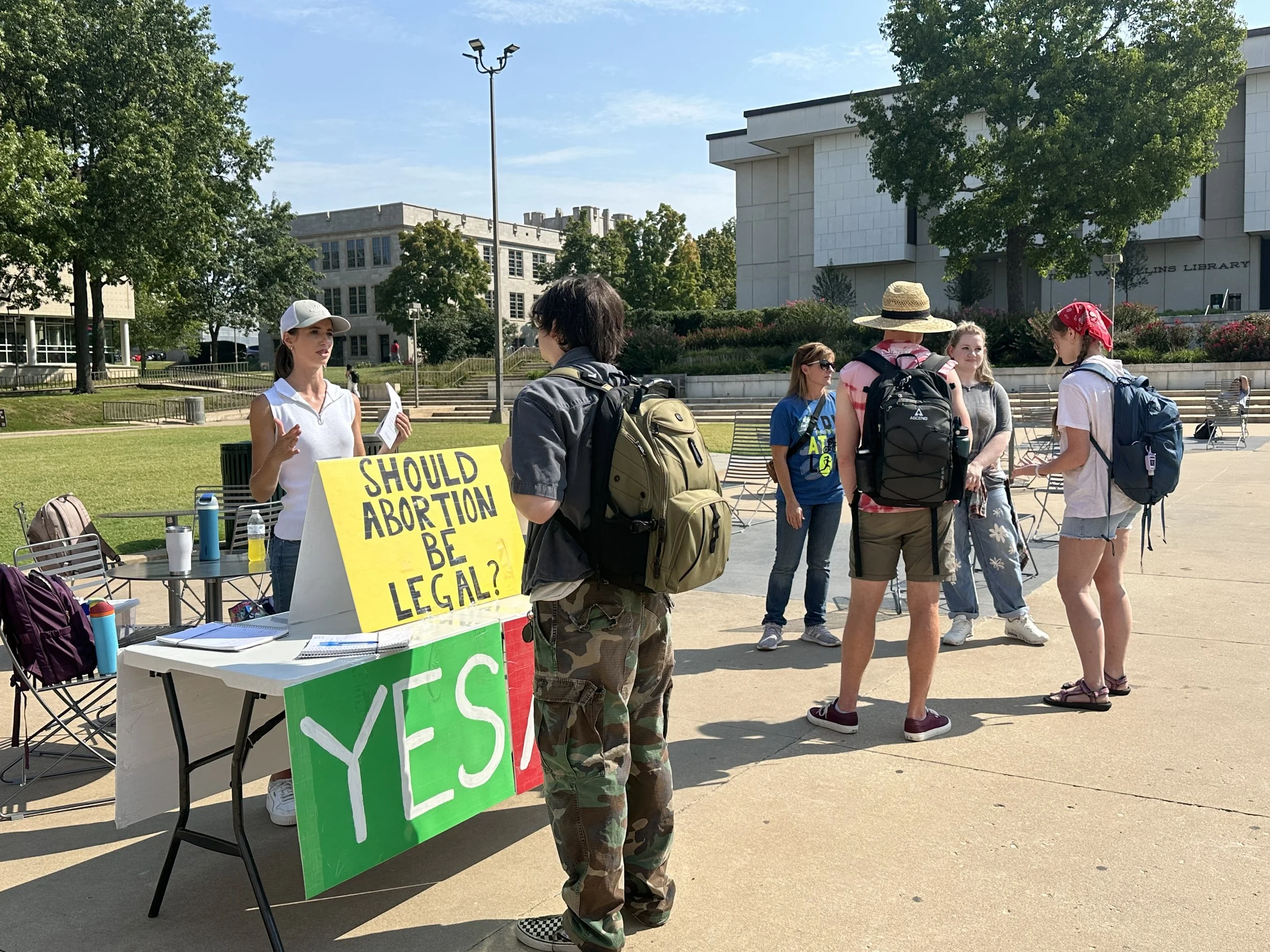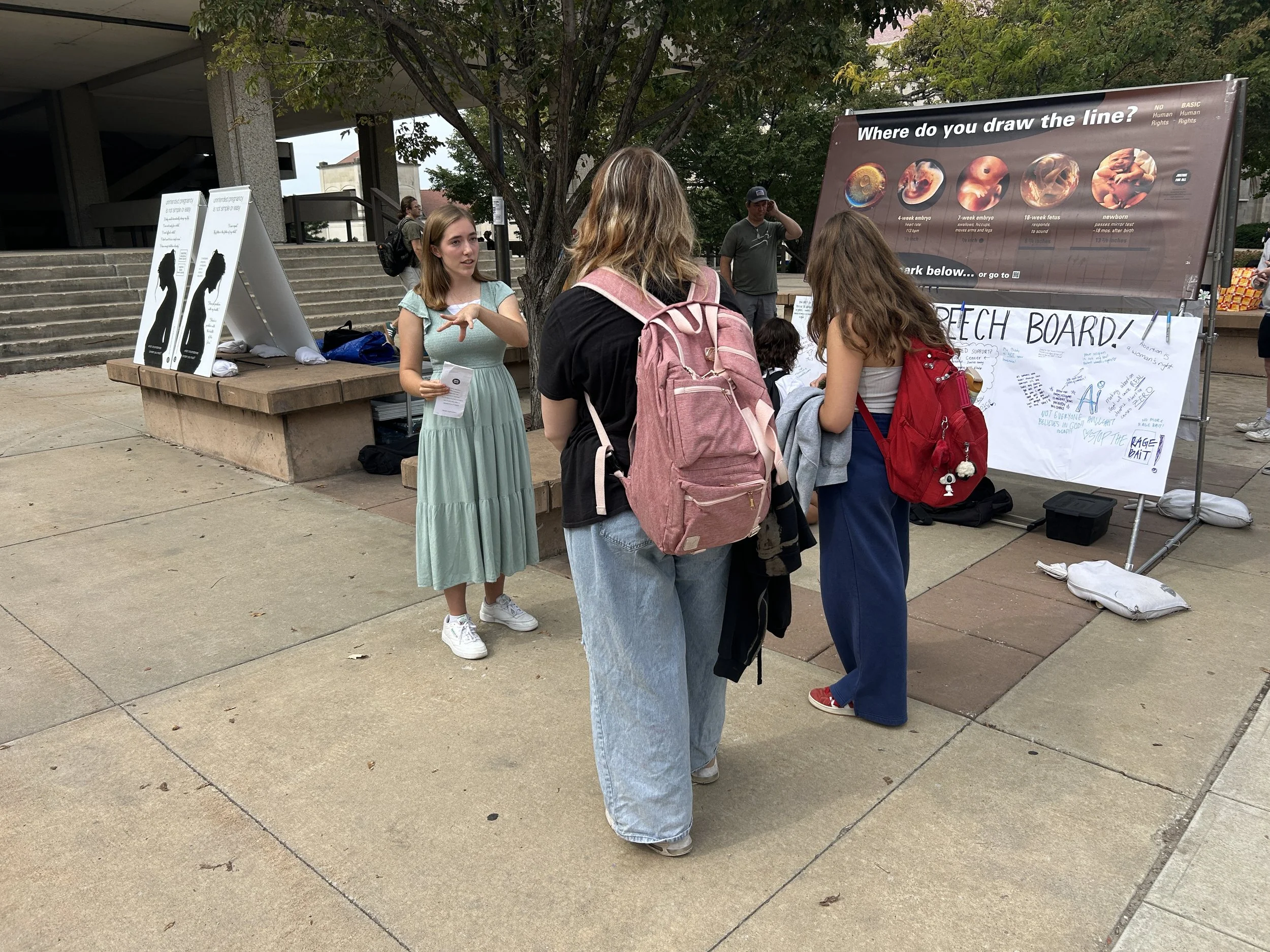JFA staff and volunteers are currently in the midst of a 3-day large-format exhibit outreach, creating dialogue with students at Colorado State University (April 24-26). The Rocky Mountain Collegian covered the first day of the outreach event, yesterday. Click here or on the link below to read the full article, which features quotes from JFA Trainer Certification Program Director, Catherine Wurts.
Please note that several mistakes appear in this article. For clarification, see below.
If you saw one of JFA's large exhibits at CSU this week, click here to share your opinion or get more information about any of our exhibits.
Points of Clarification
1) JFA’s first public exhibition at CSU was not last year, but was in 2002. However, our first time showing the “Stop and Think” exhibit was last year.
2) Zach Lee-Watts is a JFA student volunteer rather than a staff member. He is with the JFA team reaching out at CSU this week.
3) JFA's updated online Fact Sheet reports 926,200 abortions per year in the U.S. (based on a 2014 Guttmacher Institute study). The paper version of the Fact Sheet used at the CSU outreach had not yet been updated, as the new numbers were just released in March. The old paper version stated that 1.06 million abortions take place per year in America (based on a 2011 study by the Guttmacher Institute.) An updated printable version is also available at the link above.
4) To explain the discrepancy between the Guttmacher Institute statistics we report, and the CDC statistics reported in the article, one needs only look in the “Limitations” portion of the CDC study linked in the article. It states:
"The findings in this report are subject to at least four limitations. First…CDC is unable to obtain the total number of abortions performed in the United States. During the period covered by this report, the total annual number of abortions reported to CDC was consistently approximately 70% of the number recorded by the Guttmacher Institute, which uses numerous active follow-up techniques to increase the completeness of the data obtained through its periodic national census of abortion providers… for 2013 CDC did not obtain any information from California, Maryland, or New Hampshire."











